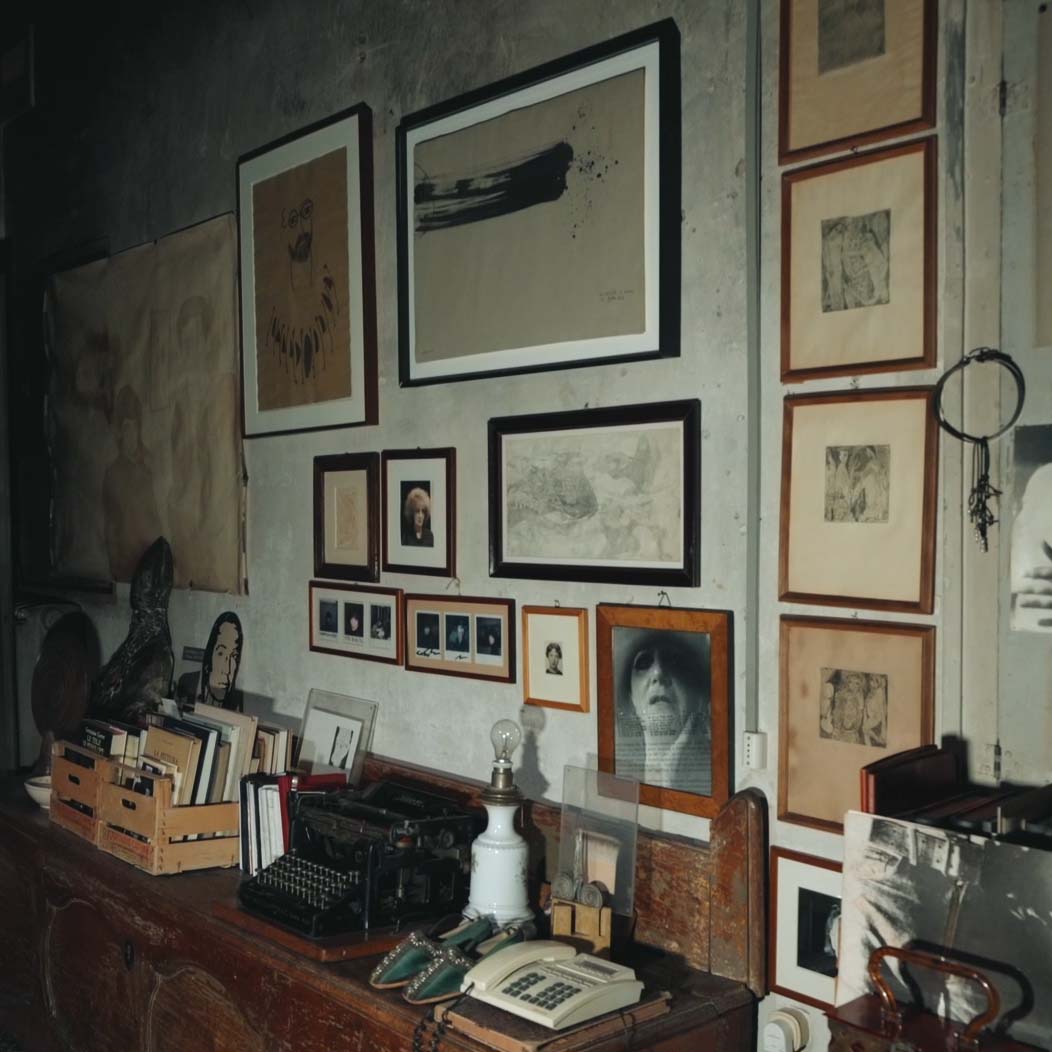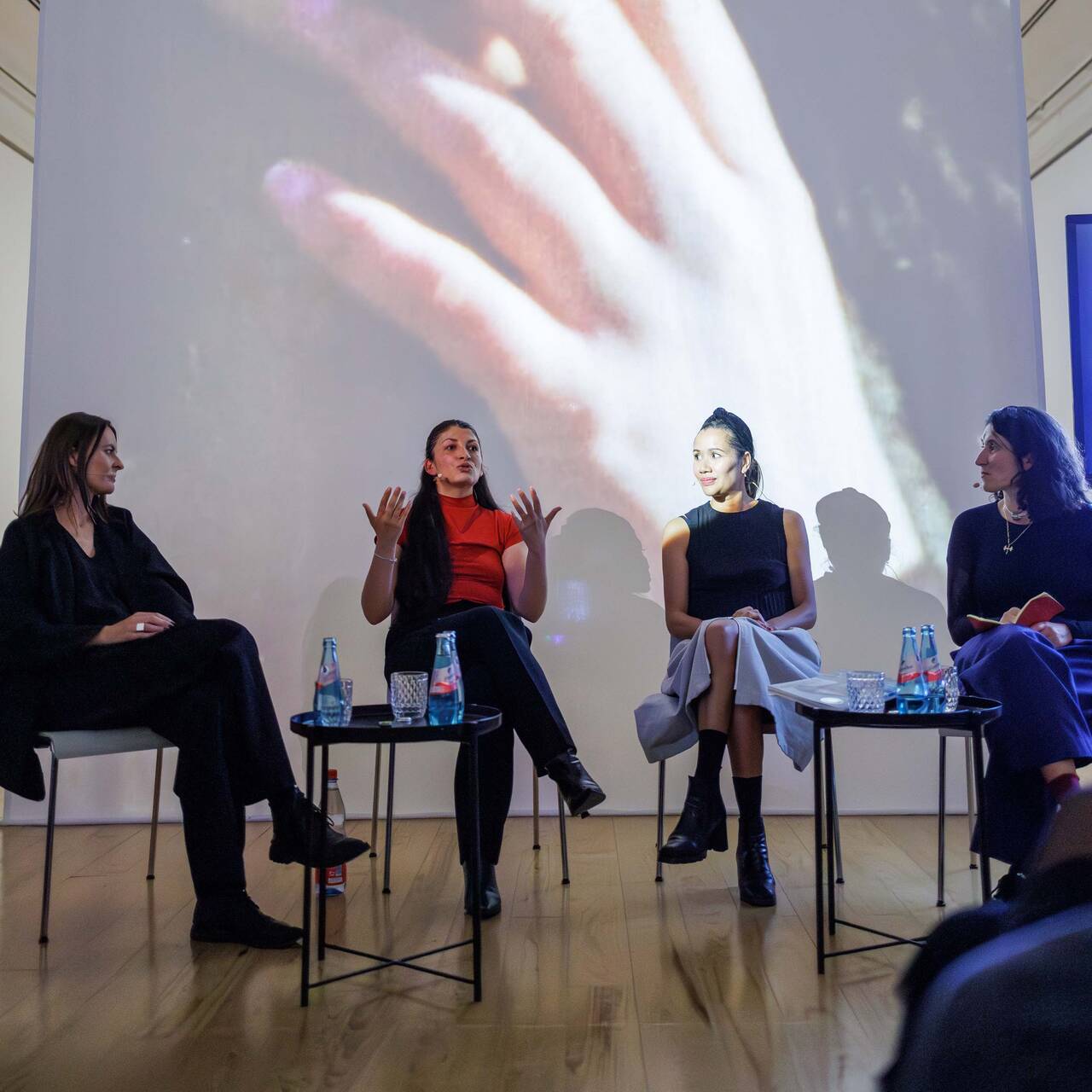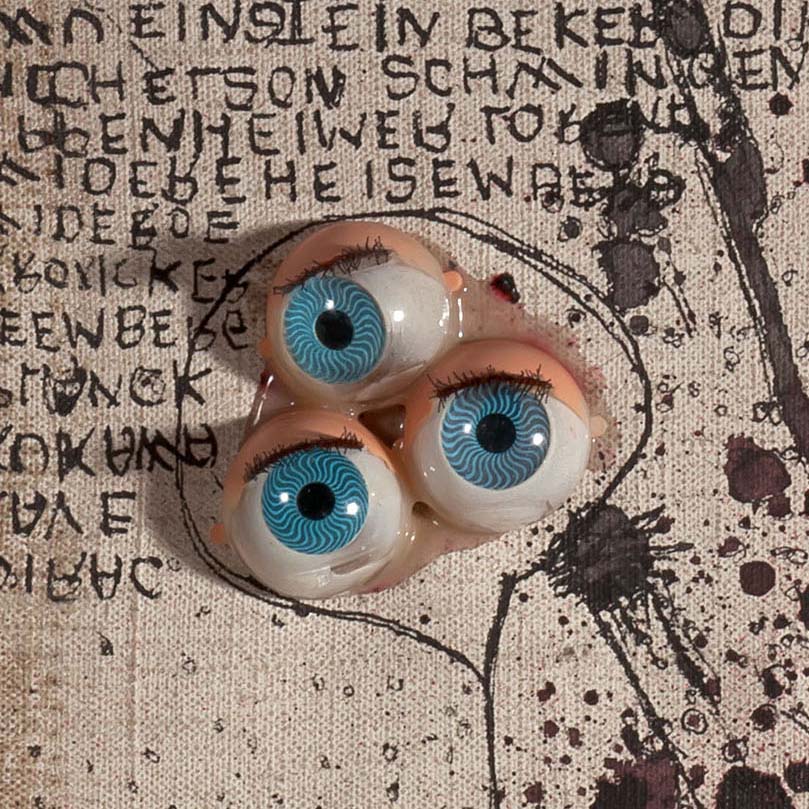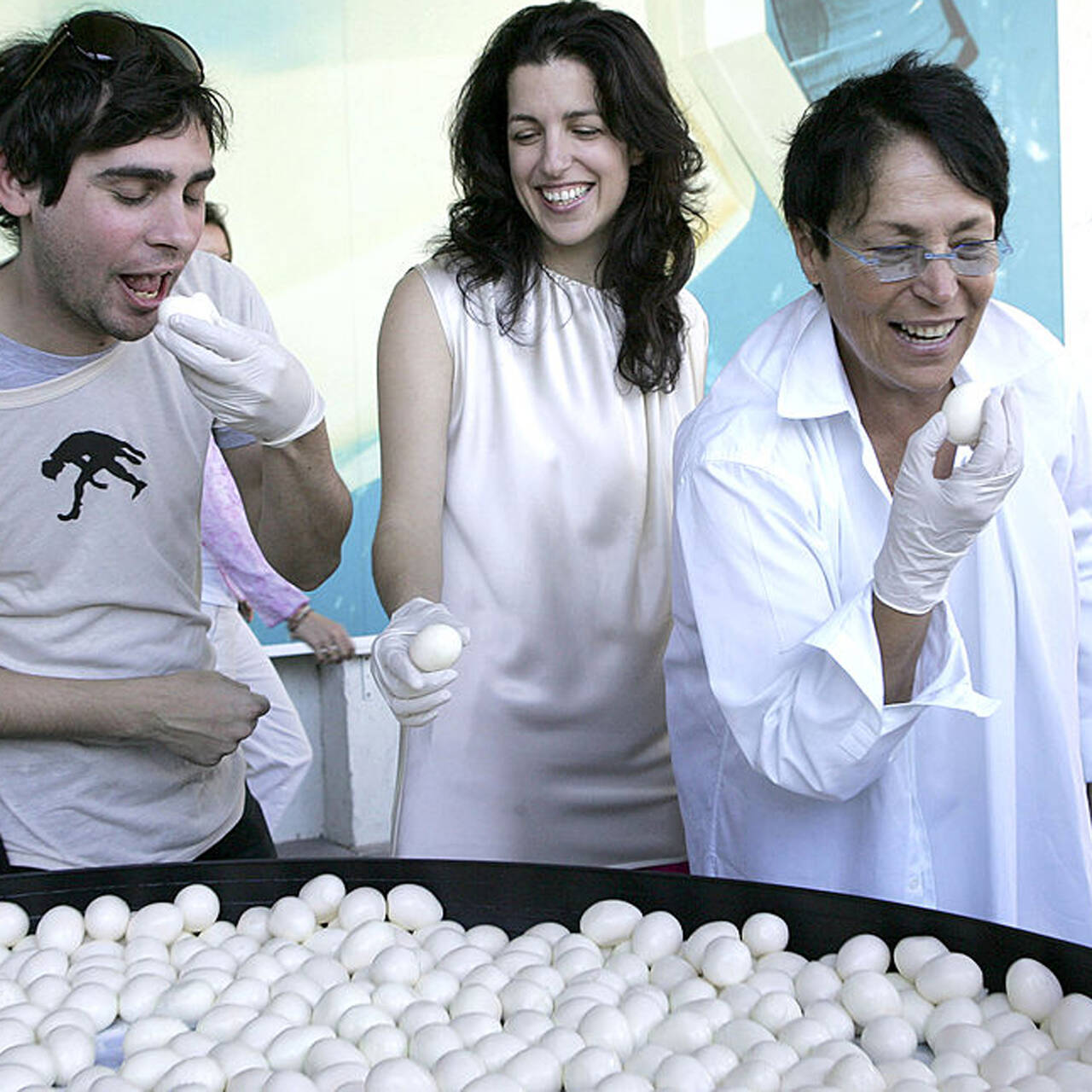Parties, dancing mania and crisis as the primal state of the entertainment industry: Oliver M. Piecha talks about Frankfurt during the 1920s and how the city was developing a pleasure industry and nightlife all of its own.
It’s almost 20 years ago since Oliver M. Piecha was researching Frankfurt during the interwar years for his Master’s thesis: Many sources had been destroyed in the War, others survived only in fragments. So he made do with what he could get – for example the legendary “Frankfurter Zeitung,” working his way through every available edition between 1919 and 1933 with a particular focus on the feuilleton. He talks about the results of his work, which he published 2005 in a book: Partys in “Roaring Frankfurt”, the crisis as the primal state of the entertainment industry – and what reached the provinces of the Weimar Republic.

Your prologue sounds like the swansong of the image we all like to cultivate of Berlin during the Weimar Republic: “The 1920s have gained almost mythological status; somehow everything is golden, even the trash.” And then in virtually any anecdote this very cliché seems to be revealed as not all that inaccurate.
Yes, it is indeed real! The myth of the 1920s does have a foundation in reality, and it resonates far beyond the city. But we often forget to consider what was happening in the rest of Germany beyond the confines of the Kurfürstendamm in Berlin. The city supplied the myth; the rest of the country had to pay for it. A bit like today (laughs).
And events in the rest of Germany, for example here in Frankfurt – are they real or a preconception?
Here too, the so-called “dancing mania” took root in the years directly after the end of World War I with dance halls, like an early form of discotheque, opening up all over the place. Within a few years people were going to sophisticated dance cabarets.
It was during this time that the modern culture industry developed, which – to quote Frankfurt philosopher Theodor W. Adorno – to this day is characterized by ups and downs, by splendor and crisis. Take the Schumann Theater opposite the main railway station: Its several thousand seats had to be filled one way or another! The theater cost a fortune to maintain, so lots of different things were trialed. The longing for greatness and prestige was countered with real fixed costs and the concern that they might simply bypass the entertainment needs of the masses. Triumph and crisis alternated continually and in the provinces, of which Frankfurt was part at that time, a lot seemed considerably less thrilling than it was presented as being in Berlin. Ultimately though, it was all about the economy of nightlife.
There’s a fitting anecdote in your book about the writer Siegfried Kracauer: The origins of his famous criticism of capitalism can be traced back to a visit to the Schumann Theater to see the “Tiller Girls.”
A lot of that which Kracauer outlines in his famous essay “The Mass Ornament” can be found in the rudiments of a small text in the local section of the “Frankfurter Zeitung” about a dance revue featuring the Tiller Girls. These are apparently casual observations that are sprinkled into an ordinary review of the show: what the girls achieve, the fitness of their legs, stopwatch-like precision; I think he actually found the show rather fun and expanded the little feuilleton to a great criticism of capitalism. After all, this link between intellect and amusement is very typical of Frankfurt.

In your book, you describe this constant interim state of a city which naturally could not keep up with Berlin, but was nevertheless able to develop a pleasure industry and nightlife all of its own. Where did “Roaring Frankfurt” play out?
The Schumann Theater was absolutely defining, of course. At that time you stepped out of the main railway station and saw it before you: huge, ceremonially illuminated at dusk, a banner advertising the current attraction. The Schumann, with its initially 5,000 and then 3,000 seats, was one of the greatest revue-theaters in all of Europe. Incidentally, the magnificent art-nouveau façade stood until the 1960s – it was a real crime of urban planning that it was torn down to make way for a parking garage. But perhaps it might one day be possible to rebuild it…
Then there was the “Gross-Frankfurt,” for example, at the Eschenheimer Turm, with a name that already pointed towards Frankfurt’s aspiration to expand: A modern pleasure complex with multiple offerings under one roof – variety, cabaret, cinema, various restaurants with dance floors and a bar. An artificial world en miniature, a bit like in the famous “Haus Vaterland” at Berlin’s Potsdamer Platz. As in Berlin, people in Frankfurt also liked to decorate restaurants according to a theme, for example like a picturesque old town – even though the real one still remained at the time – but alpine panoramas were also sometimes very much en vogue.


Another important theme was the major parties that were held: glittering carnival balls, large-scale civic events which appeared to be very successful artistically, too. For the “Timbuktu” themed parties, for example, Städel students and their teachers painted countless square meters of canvas for the jungle decoration, while the greats of Frankfurt’s stages stood behind the bar. You have to imagine it this way: The art you see today in the museum, these Expressionist images – all that was real here. You might have leapt through wild scenery in a lavishly styled Expressionist costume, and the opera orchestra suddenly became a jazz band conducted by Paul Hindemith. He was living in Frankfurt’s Sachsenhausen district. So this was the entertainment culture of the modern times on a very high level, as we like to imagine it today, all in Frankfurt’s own style, you see.
One of the statements from “Roaring Frankfurt” is that Frankfurt was no “laboratory of the modern movement,” but some place modernism had long been practiced in the 1920s. Can you explain once again what, for you, made Frankfurt such a decidedly Western city?
Frankfurt was quite cosmopolitan and notable for its pragmatism. People on the River Main felt somewhat patronized and neglected by Prussian Berlin. After all, Prussia had stretched to the East right up to what was then the Russian border, and with its still semi-feudal social structure and a very predominant military, it had always been a little suspicious of curious Frankfurt with its international trade links and the democratic traditions of the 1848 revolution.
In the days of the Weimar Republic, Frankfurt was thought to be “republican-minded,” and the famous “Frankfurter Zeitung” was testament to this. All the important nationwide newspapers could be found in Berlin at that time – except for the “Frankfurter.” And abroad, this great liberal paper was the most closely watched German newspaper; it was the intellectual reservoir of the city. Architecturally too, Frankfurt was unbelievably modern: the enormous housing developments, New Frankfurt – even the eagle on Frankfurt’s coat of arms was given a modern design. Or the Waldstadion – it’s astonishing how modern that still seems today! Light and air and open-air swimming – that was the other side of Weimar Republic culture alongside cabaret, cocaine in the railway station district, and dance halls.

Aerial shot from Frankfurt central station, around 1930, Image via: 4.bp.blogspot.com
Of course Hitler didn’t like Frankfurt much either. In “Mein Kampf” he talks explicitly about the city of the Jews, the city of the Rothschilds and the “Frankfurter Zeitung.” And since the Nazis sought a “title” for every city, they eventually named Frankfurt the “city of German craftsmanship,” which was already somewhat farfetched. At the time, the edge of the city’s Westend district was already home to the enormous I.G.-Farben building, and discussions were already underway as to whether the Old Town might be demolished, for example for parking spaces. The Nazis also had the problem that they couldn’t really get to grips with Frankfurt ideologically.
The ubiquitous and pejoratively meant cliché of Frankfurt as a city of banks and the stock exchange endures to this day, but at that time, at least, trade and intellectual life were intertwined.
Frankfurt had been de facto conquered by Prussia in 1866. Previously the city had been independent, a free city of the German Empire, with important international trading links. Here, it was undoubtedly not “democratic” in the current sense of the word, but it was certainly more democratic than elsewhere. After World War II, Frankfurt was for the most part able to link the Western orientation of the old German Republic to its own traditions: Finally it was free of Berlin, so far away in the East, and Prussia.
Frankfurt was characterized by the middle class, not by the nobility or military. Yet alongside this, and perhaps indeed because of it, the pragmatic intellect found a home here early on. The aforementioned connection between money and intellect was found precisely in the private sphere. How exciting it would be to trace a cultural history of Frankfurt’s Westend, with its illustrious private parties and many encounters – where an outlandish Marxist intellectual like Adorno, still virtually unknown at the time, could surface, as well as a bustling salon lady like Lilly von Schnitzler, whose husband worked at I.G. Farben, or an avant-garde artist like Max Beckmann!

Lilly von Schnitzler, Image via:
frankfurterfrauenzimmer.de
For your dissertation you studied a decade and a half of newspapers and found yourself engaged in an almost permanent process, which then suddenly comes to an end. Were there any aha moments? A kind of retrospection from which a new image takes shape?
What really stayed with me was, first of all, the reporting from the period directly after the War during the period of inflation – the infamous station district, the drug trade, everything that disgusts and appalls us just as much today. But also the tremendous hardship, of which we can barely conceive these days. I also found the comparatively short time between 1924 and 1928 very interesting. Looking back, we always talk about the “stable years,” but for the people of that time these years still seemed to be fraught with crises. This stability was very relative. That’s something you see immediately with the outbreak of the global economic crisis in 1929. At the time there was simply too little substance, with much of it already eaten away by the period of inflation, and then an unstoppable erosion began.


The film to the exhibition: CAROL RAMA. A REBEL OF MODERNITY
Radical, inventive, modern: The film accompanying the major retrospective at the SCHIRN provides insights into CAROL RAMA's work.

The Season of the Witch
In our next DOUBLE FEATURE, artist Margaret Haines will present her video work “On Air: Purity, Corruption & Pollution” (2024). Drawing on the life of...

Soon at the SCHIRN: Hans Haacke. Retrospective
A legend of institutional critique, an advocate of democracy, and an artist’s artist: the SCHIRN presents the groundbreaking work of the compelling...

Carol Rama’s Studio: A nucleus of creativity
CAROL RAMA determinedly forged her own path through the art world. Her spectacularly staged studio in Turin was opened to the public only a few years...

PANEL: POLITICAL ACTIVISM BY SELMA SELMAN
Hosted by Arnisa Zeqo, Amila Ramović and Zippora Elders speak with the artist Selma Selman about her artistic career, the exhibition SELMA SELMAN....

Now at the SCHIRN: Carol Rama. A rebel of Modernity
Radical, inventive, modern: the SCHIRN is presenting a major survey exhibition of CAROL RAMA’s work for the first time in Germany.

From studio to dining table: Art with a chef' hat
Are artists especially creative when it comes to cooking? A glance in the kitchens of the art world. This time with a short chronicle of artists’...